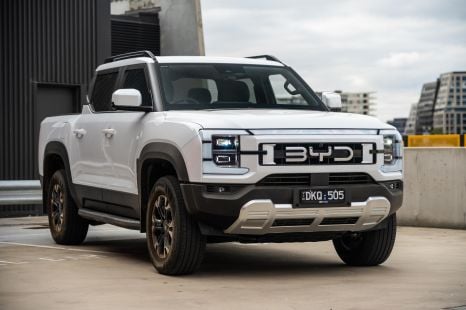

Max Davies
2025 BYD Shark 6 review
23 Days Ago
More than two years on from launch, the Ford Ranger is still the dual-cab king in Australia. A drive in the XLT reminded us why.
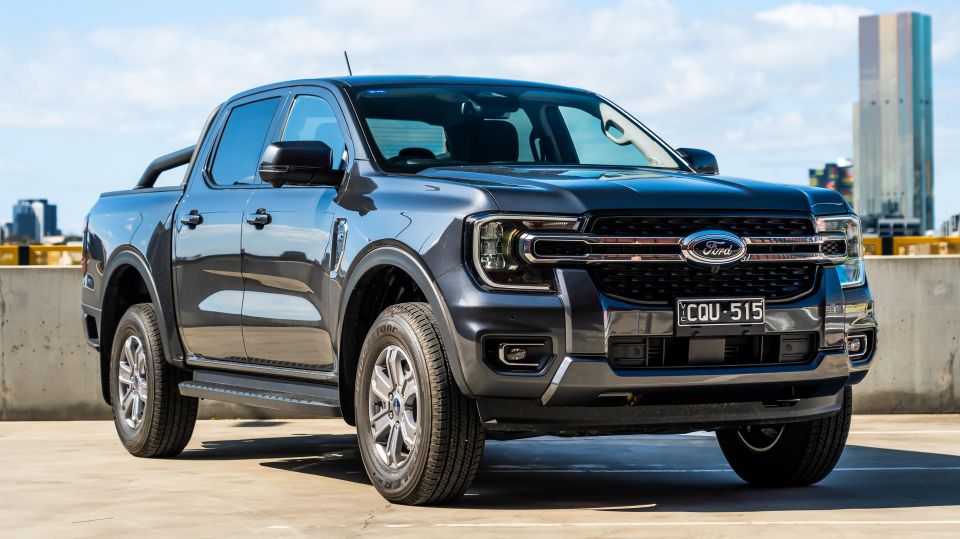


Quickly see how this car stacks up against its competition. Select any benchmark to see more details.
Where expert car reviews meet expert car buying – CarExpert gives you trusted advice, personalised service and real savings on your next new car.
More than two years on from its debut, the current Ford Ranger is still the dual-cab ute king.

Not only was it the best-selling vehicle bar none in Australia in 2023, it’s sitting atop the VFACTS sales for 2024 ahead of the Toyota HiLux.
Aside from a few adjustments to its equipment list, the introduction of a few special-editions, and the requisite price rises since its debut, very little about the Blue Oval’s best-seller has changed.
But outside of Ford’s four walls, the ute market has evolved fast. At the bottom end, the trickle of affordable Chinese utes coming to cut the base model’s lunch has become a flood.
At the top end, Toyota has rolled out mild-hybrid technology for the HiLux, Isuzu has overhauled the D-Max, and BYD is coming with the plug-in hybrid Shark 6 to really shake things up.
WATCH: Paul’s video review of the 2023 Ford Ranger XLT V6
The Ranger might be the top dog for now, but there are plenty of rivals gunning for its crown. We’ve hopped back into the XLT V6 to see if it’s still got what it takes.
We hope you’re sitting somewhere comfortable, because this is a massive lineup thanks to a big mix of drivetrains, body styles, and trim choices.
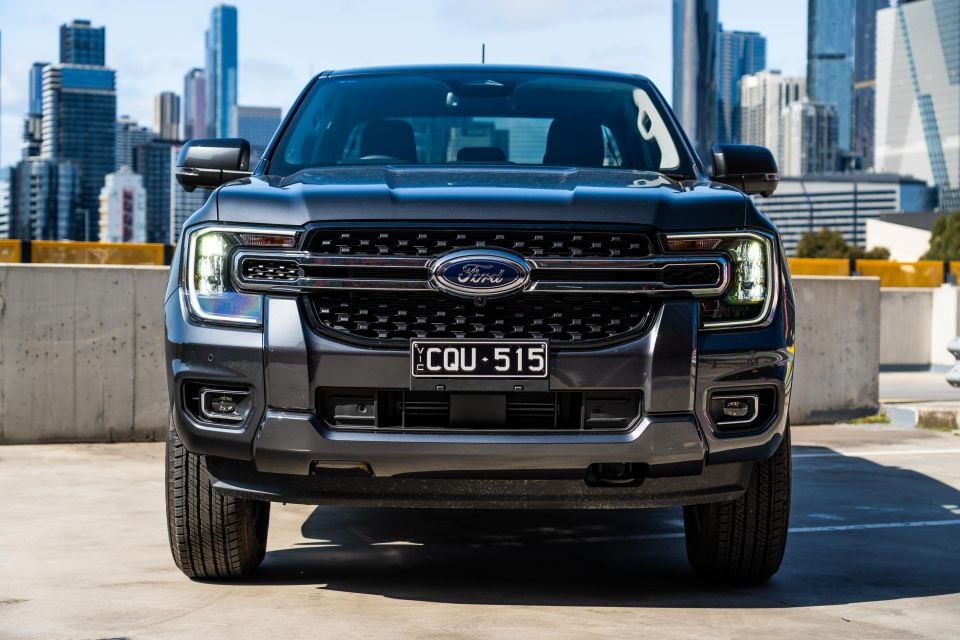
Ranger XL
| Model | Price before on-road costs |
|---|---|
| Ford Ranger XL 4×2 single cab chassis | $36,880 |
| Ford Ranger XL 4×2 super cab chassis | $39,380 |
| Ford Ranger XL 4×2 double cab pickup | $43,280 |
| Ford Ranger XL 4×4 Bi-Turbo single cab chassis | $47,980 |
| Ford Ranger XL 4×4 double cab chassis | $48,980 |
| Ford Ranger XL 4×4 Bi-Turbo super cab chassis | $50,480 |
| Ford Ranger XL 4×4 double cab pickup | $50,880 |
| Ford Ranger XL 4×4 Bi-Turbo double cab chassis | $52,480 |
| Ford Ranger XL 4×4 Bi-Turbo double cab pickup | $54,380 |
Ranger Black Edition
| Model | Price before on-roads |
|---|---|
| Ford Ranger Black Edition 4×4 Bi-Turbo double cab pickup | $56,680 |
Ranger XLS
| Model | Price before on-roads |
|---|---|
| Ford Ranger XLS 4×4 Bi-Turbo double cab pickup | $57,630 |
Ranger XLT
| Model | Price before on-roads |
|---|---|
| Ford Ranger XLT 4×2 Bi-Turbo double cab pickup | $56,440 |
| Ford Ranger XLT 4×4 Bi-Turbo super cab pickup | $61,640 |
| Ford Ranger XLT 4×4 Bi-Turbo double cab pickup | $63,640 |
| Ford Ranger XLT 4×4 V6 double cab chassis | $66,940 |
| Ford Ranger XLT 4×4 V6 double cab pickup | $68,840 |
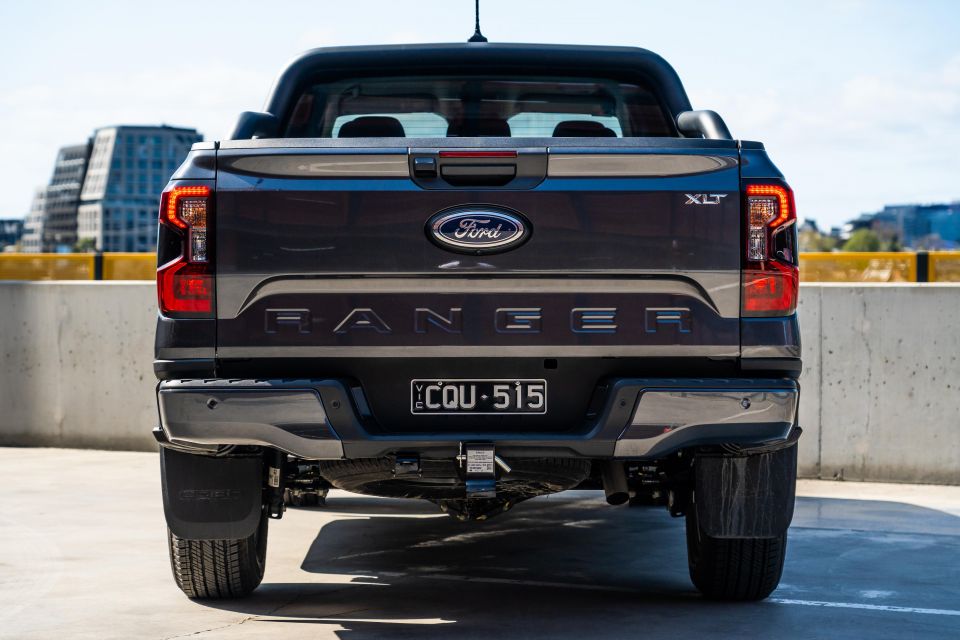
Ranger Sport
| Model | Price before on-roads |
|---|---|
| Ford Ranger Sport 4×4 Bi-Turbo double cab pickup | $66,140 |
| Ford Ranger Sport 4×4 V6 double cab pickup | $71,340 |
Ranger Tremor
| Model | Price before on-roads |
|---|---|
| Ford Ranger Tremor 4×4 Bi-Turbo double cab pickup | $69,690 |
Ranger Wildtrak
| Model | Price before on-roads |
|---|---|
| Ford Ranger Wildtrak 4×4 Bi-Turbo double cab pickup | $69,640 |
| Ford Ranger Wildtrak 4×4 V6 double cab pickup | $74,840 |
Ranger Platinum
| Model | Price before on-roads |
|---|---|
| Ford Ranger Platinum 4×4 V6 double cab pickup | $80,640 |
Ranger Raptor
| Model | Price before on-roads |
|---|---|
| Ford Ranger Raptor 4×4 3.0TT V6 double cab pickup | $90,440 |
To see how the Ford Ranger compares to its rivals, check out our comparison tool
Buy your new car without the stress. It's fast, simple and completely free.

Great service from Travis and team, second time I have used this business would not hesitate to recommend them to anyone
Craig C.
Purchased a Ford Ranger in Sunshine Coast, QLD
CarExpert helped Craig save $7,224 on his Ford Ranger, now let us save you on your next new car.
Get your BEST priceMore than two years after its debut, the Ranger is still the most modern dual-cab ute on the market… at least before you start looking at bigger, significantly more expensive American pickups.
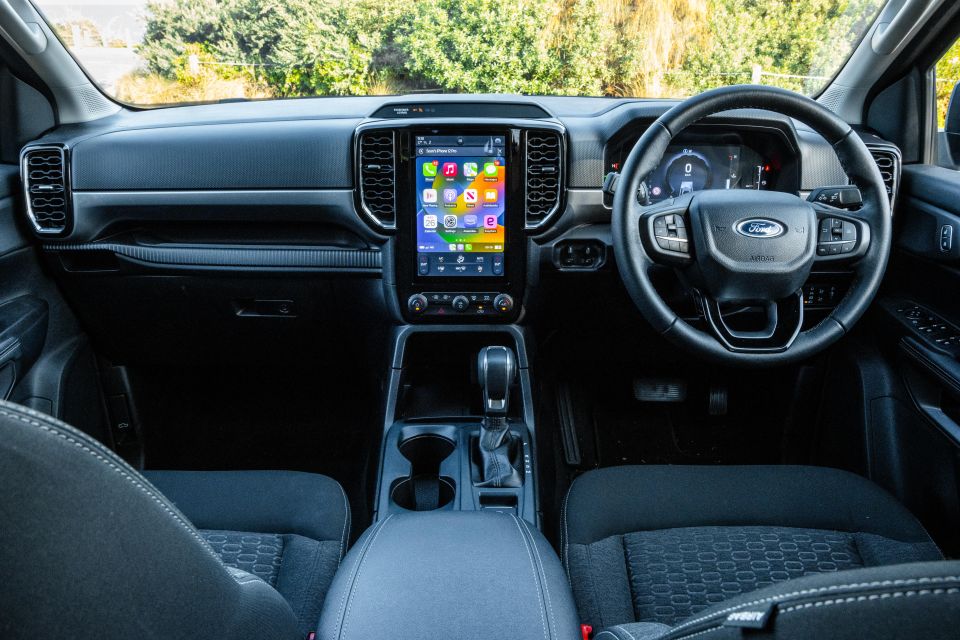
With a tilting and telescoping wheel, well-padded seats that accomodate tall drivers, and plenty of storage up front, it’s still the best ute out there if you’re planning to spend long stints on the highway.
Even without the leather trim, heated seats, and fancy stitching of the Wildtrak, it’s a quality place to spend time.
Although the XLT only gets a 10-inch display instead of the 12-inch touchscreen in the Wildtrak, it’s still bigger and better than what’s on offer in a HiLux or D-Max. Ford has polished the software since launch, with new icons and colours that debuted in the Ranger Platinum.
The menu structure is logical, and the amount of screen real estate means key information isn’t buried. It’s possible to have your mapping, radio preferences, and climate details on display all at once, for example. Unlike earlier examples, there is no awkward lagging or stuttering between screens here.
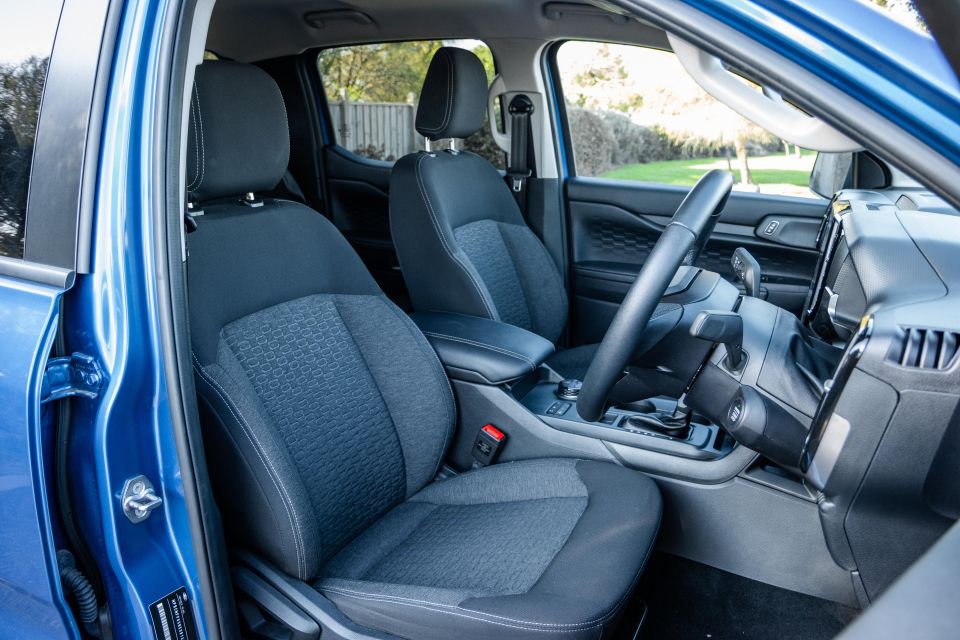
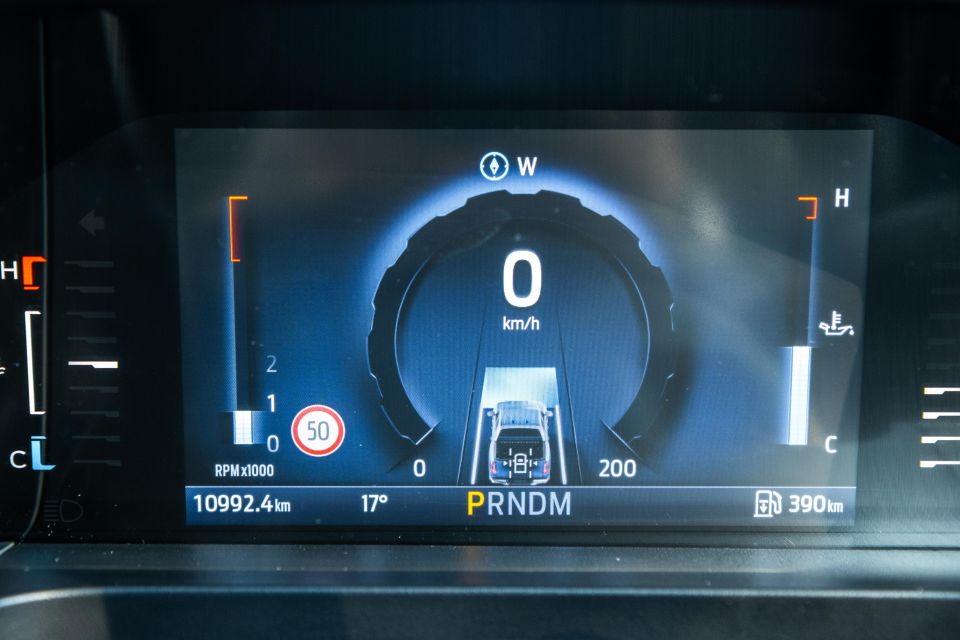
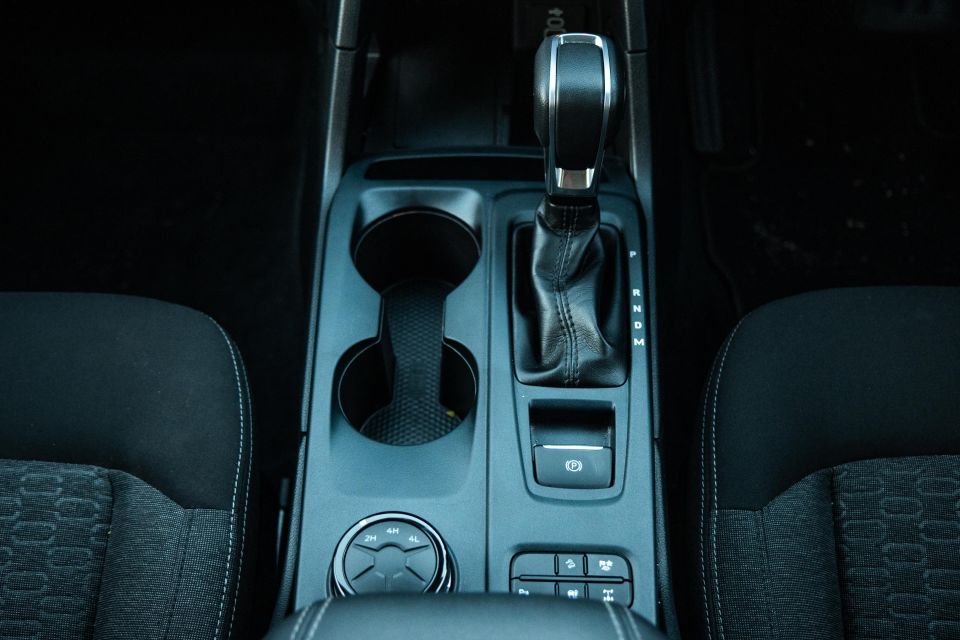
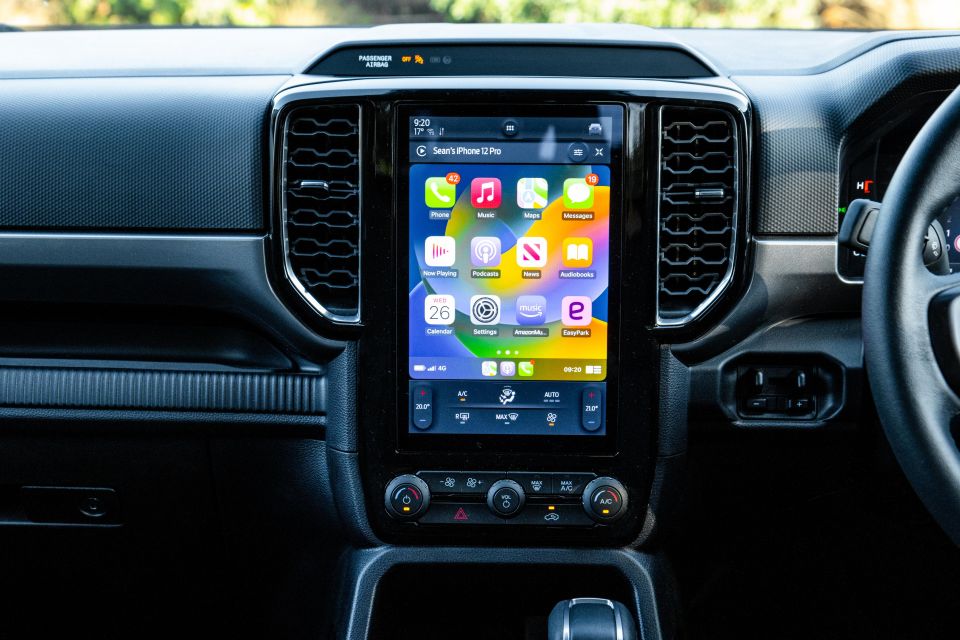
Wireless Apple CarPlay connected flawlessly for us, but on longer trips we used USB-C to preserve phone battery.
The digital instrument cluster is quite basic; only the Ranger Raptor and Platinum get a fully featured 12-inch setup. It shows your speed, revs, and trip information, but can’t be set up with mapping for example.
FordPass Connect is standard on the Ranger, and allows owners to lock or unlock and remotely start their car, find their car, check their fuel level, activate the exterior lighting, or even check the indicators on your trailer are working.
It feels like Ford has really thought about how to value-add with its app in the Ranger, rather than just translating passenger car technology into a vehicle with a different set of goals.
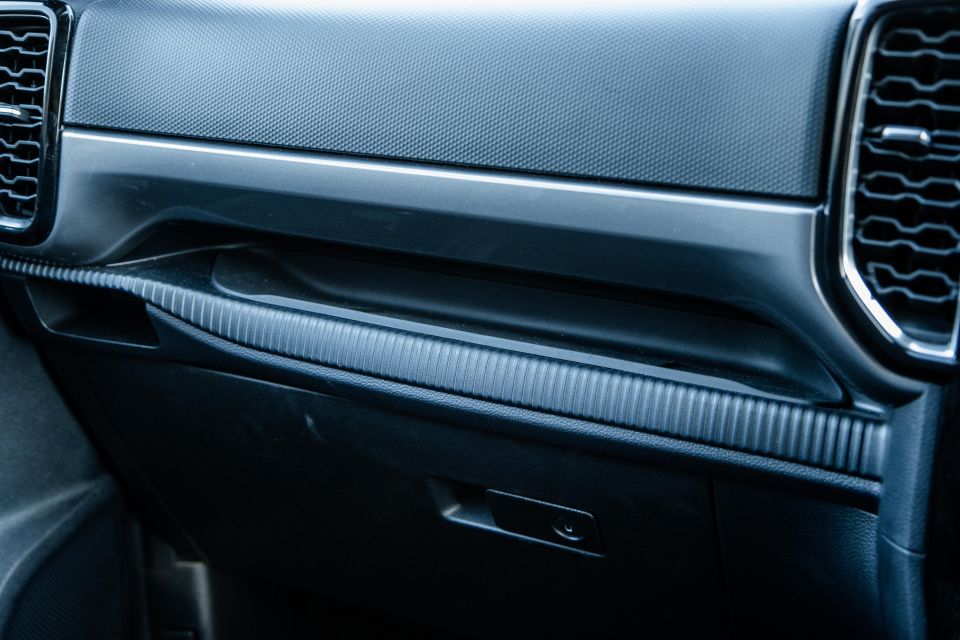
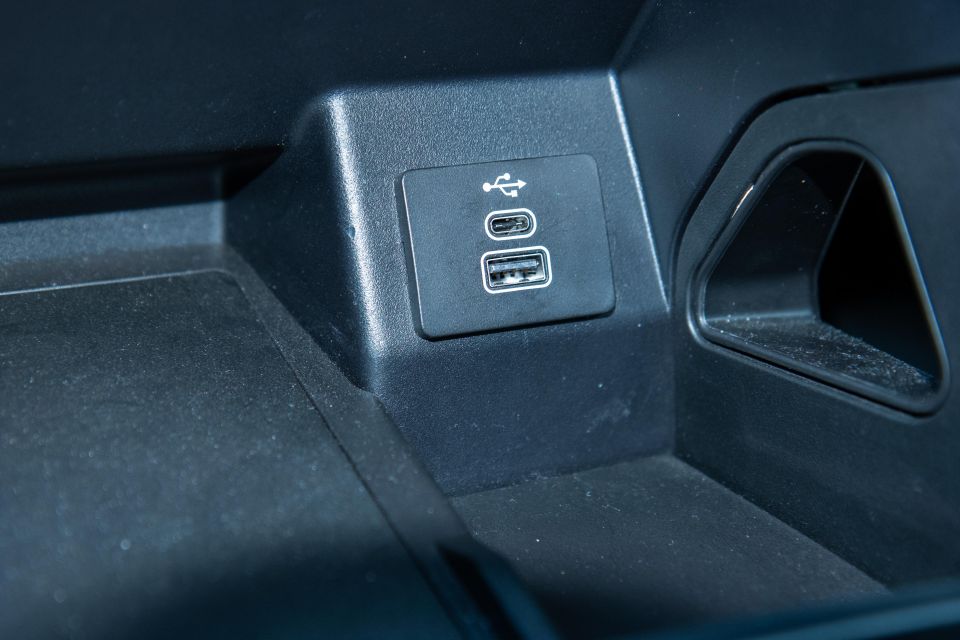
Storage space around the cabin is plentiful. The central bin is deep, the door pockets have plenty of room, there are two cupholders on the transmission tunnel, and the slot beneath the dashboard is huge. The slot ahead of the gear selector is perfect for a large McDonald’s fries.
You don’t get the neat pop-out cupholders on each end of the dashboard, nor the extra pop-up glovebox atop the dash from the Wildtrak.
Rear seat space is fine, but doesn’t feel like much of a step on from what was previously on offer.
Legroom and headroom are both acceptable, and the bench is broad enough that three tradies will be able to travel on short journeys without wanting to kill each other afterwards.
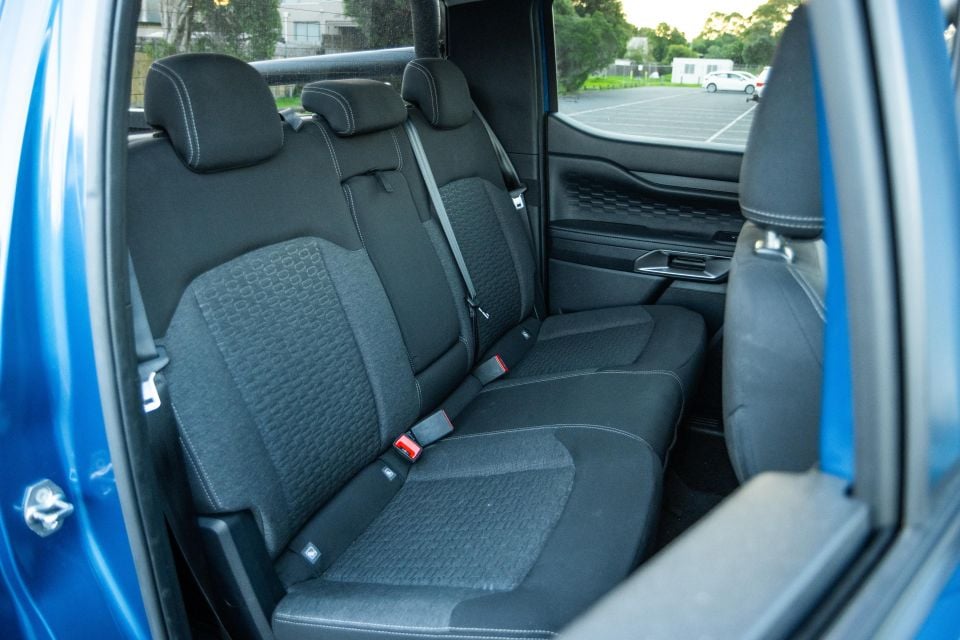
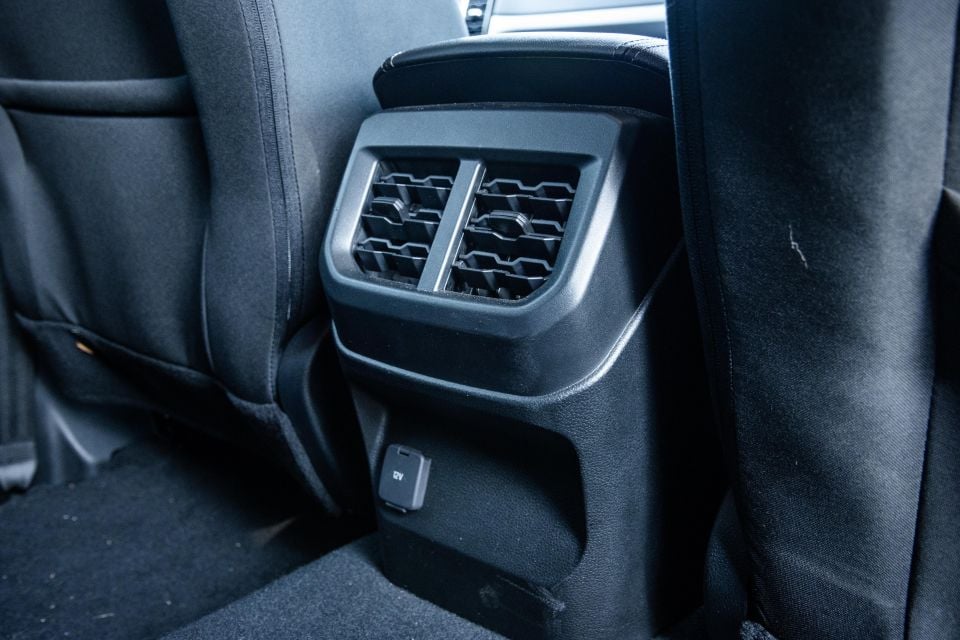
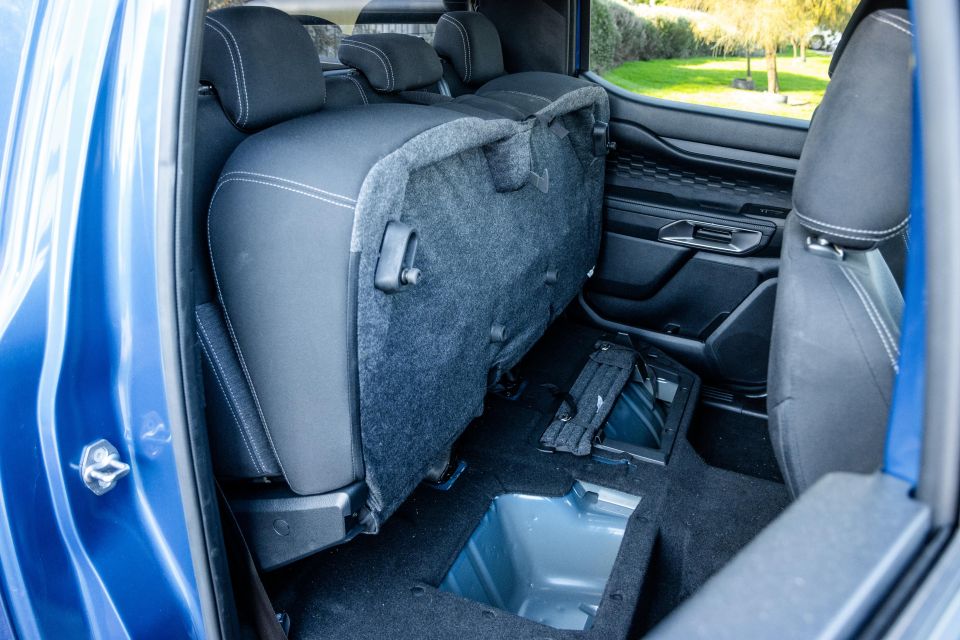
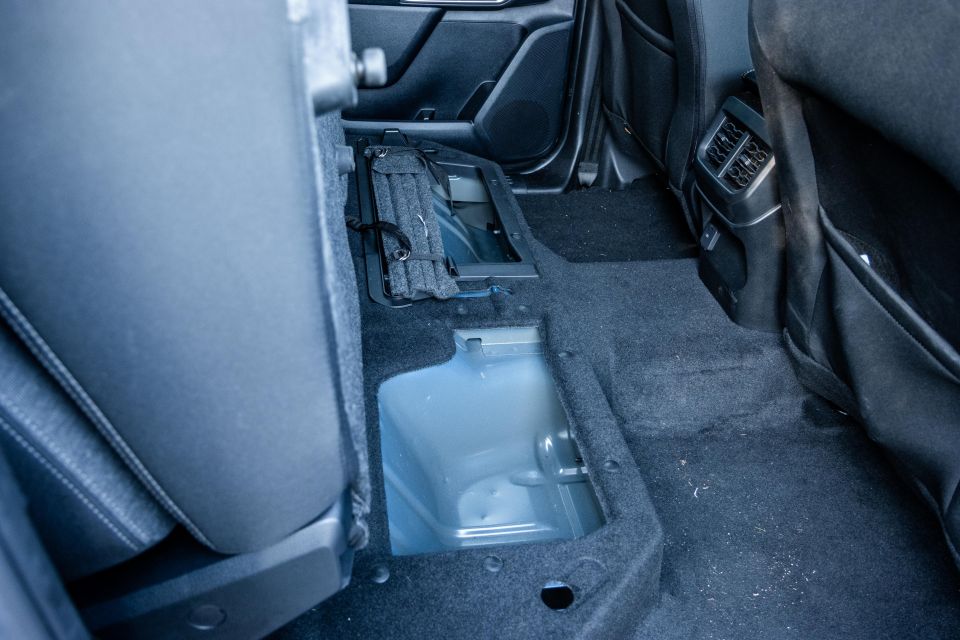
The inclusion of air vents is good, although the fact Ford has fitted a 12V slot but no USB ports on the rear of the centre console seems like a missed opportunity.
The 12V is versatile when it comes to accessories, but you’ll need to plug in a dongle to charge iPads back there.
Along with the requisite ISOFIX and top-tether child seat points, the Ranger features a fold-down central armrest, damped rear grab handles, and storage bins beneath the seat bases.
Dual-cab Ranger models have a wider tub than before, billed as sufficient to flat-stow a 1200mm x 800mm pallet.
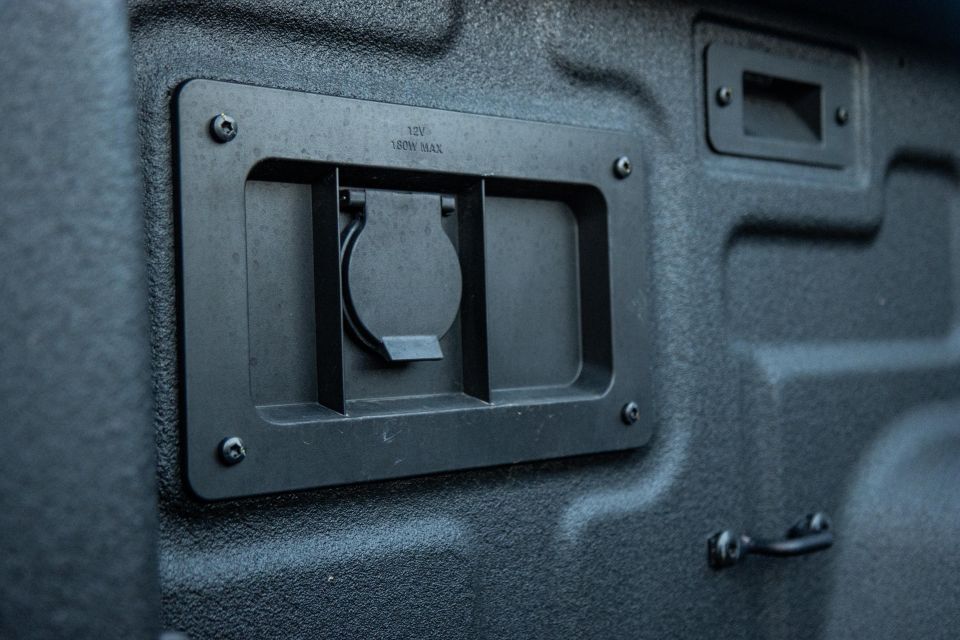
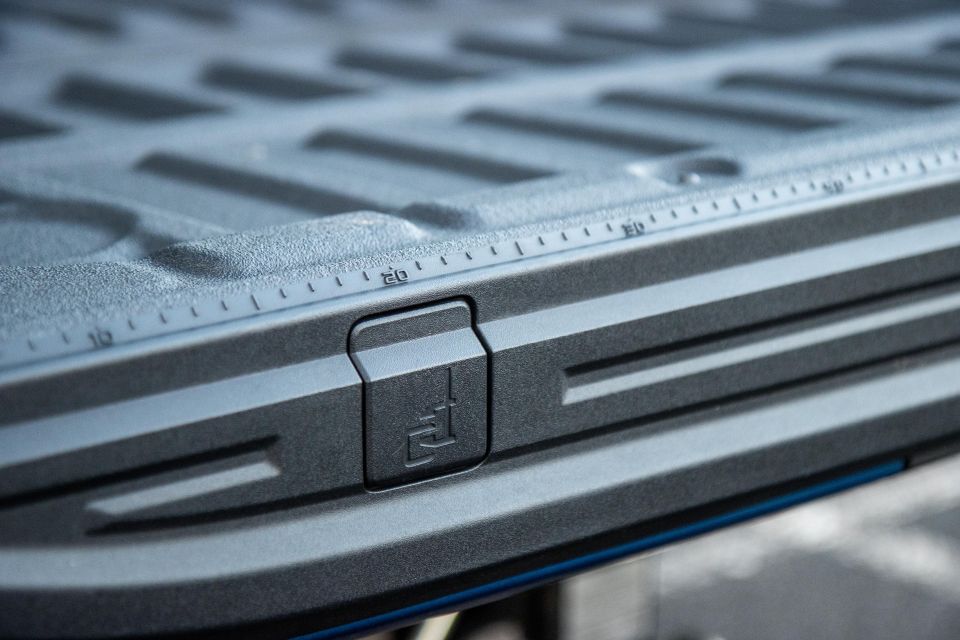
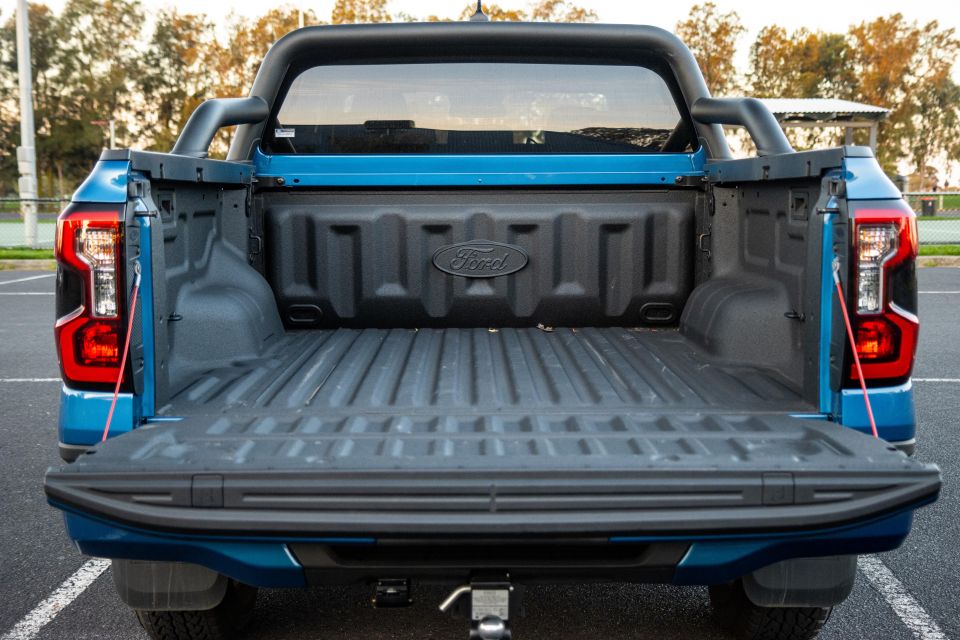
It’s simpler to access, with sturdy box steps fitted just behind the tyres. At 100kg, my weight didn’t make them flex.
The counterbalanced tailgate (with mounting points for vices and even a pre-drawn ruler) can be lifted with a finger, there are six tie-down hoops in the bed, and the box sides have structural attachment points for canopies pre-fitted.
| Dimensions | Ford Ranger XLT V6 |
|---|---|
| Length | 5370mm |
| Width | 1918mm |
| Height | 1886mm |
| Wheelbase | 3270mm |
To see how the Ford Ranger compares to its rivals, check out our comparison tool
Although you can have your Ranger with a cheaper, less powerful Bi-Turbo four-cylinder diesel engine, our tester was fitted with the V6. Along with more power, it brings a more sophisticated four-wheel drive system that can be operated on sealed surfaces.

| Specifications | Ford Ranger XLT V6 |
|---|---|
| Engine | 3.0L V6 turbo-diesel |
| Power | 184kW |
| Torque | 600Nm |
| Transmission | 10-speed auto |
| Drive type | Full-time 4WD with 4A, 4H, 4L |
| Fuel economy (claimed) | 8.4L/100km |
| Fuel economy (as tested) | 9.0L/100km |
| CO2 emissions (claimed) | 222g/km |
| Fuel tank | 80 litres |
| Weight | 2332kg (kerb) |
| Payload | 948kg |
| Braked towing capacity | 3500kg |
| Gross vehicle mass (GVM) | 3280kg |
| Gross combination mass (GCM) | 6400kg |
To see how the Ford Ranger compares to its rivals, check out our comparison tool
If you’re driving to and from work in your Ranger without ever really testing its payload or towing capacity, you probably don’t need the V6 engine… but that doesn’t mean you won’t want it.
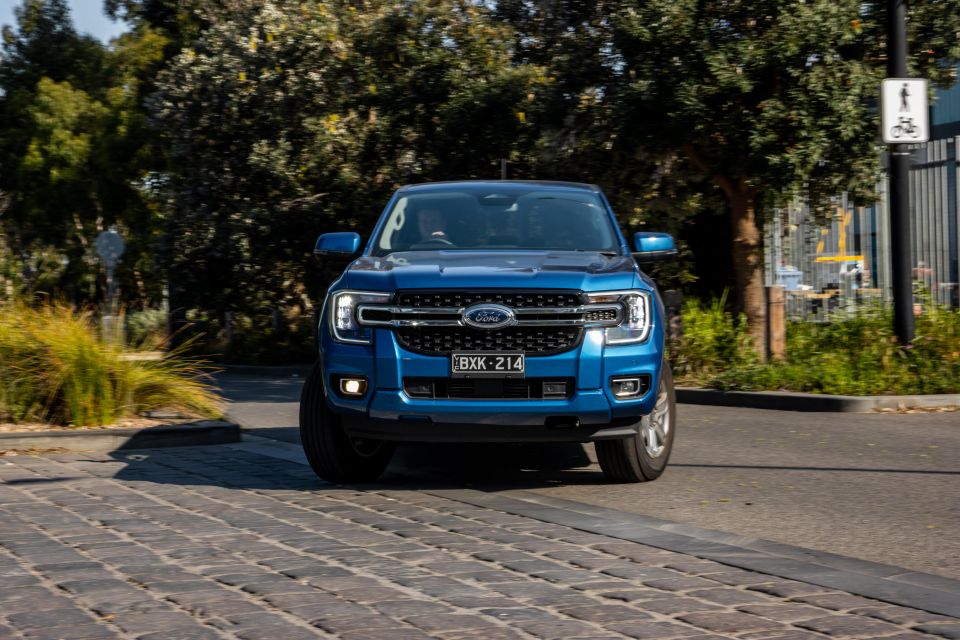
The engine (dubbed Lion) traces its roots to Land Rover, and a version of it featured in the Ford Territory diesel. It was new to the Ranger at launch, but an iteration has also appeared in the full-sized F-150 pickup sold in the USA.
The extra torque on offer is immediately noticeable, playing out with a satisfying surge of performance from below 2000rpm when you lean on the throttle and strong in-gear response at highway speeds. When you want more punch it’s clear there’s a much higher ceiling on what the V6 can do.
In our drag races, towing tests, and off-roading tests, the extra torque makes a meaningful difference relative to the Bi-Turbo. The effortless feel it offers is luxurious in the context of the dual-cab ute market.
Beyond the extra punch on offer, the V6 sets itself apart with proper full-time four-wheel drive. Rather than the part-time four-wheel drive system in the Bi-Turbo, which shouldn’t be driven in 4×4 on sealed roads, the system in the V6 can be used all the time.

You can set it in 4A and forget it for normal driving, then enjoy all-wheel drive traction in wet conditions without the risk of your differentials binding.
Utes on all-terrain tyres are notoriously skittish on wet tarmac, so the added security of a full-time four-wheel drive system brings benefits in a wide range of conditions.
There are limitations to a ladder-frame vehicle relative to a monocoque when it comes to ride comfort without a load in the tray.
At launch, Ford talked about making the car’s track 50mm wider and moving the dampers outboard to cut down on hopping when the tray is empty. More than two years on from launch, the Ranger remains one of the comfier utes to drive on the road.
You don’t get the sense the tail is wagging when you hit bumps at speed, and occupants aren’t jiggled around relentlessly.

It’s rock-solid over the sort of washboard gravel roads prevalent in remote parts of Australia, and does an excellent job of soaking up the sort of pitted streets common in the less remote bits. On coarse-chip roads it’s impressively hushed in the cabin, too.
The Ranger can’t escape its ladder-frame chassis and payload carrying capability entirely, though. It’s busier than the related Everest 4×4 on the highway, for example, and never settles entirely where SUVs will.
If you need a tray on the back of your car it’s an excellent choice, but utes still aren’t able to match non-commercial vehicles for comfort.
Like its predecessor, the new Ranger features light steering and decent all-round visibility. It’s one of the easiest utes to pilot in town, and the electric power steering system feels more direct than before.
In the old model you needed to twirl, twirl, and then twirl the wheel some more at low speeds; the new model requires smaller inputs.
The smooth idle start/stop system makes a difference in the city, although plenty of owners will no doubt turn it off immediately.
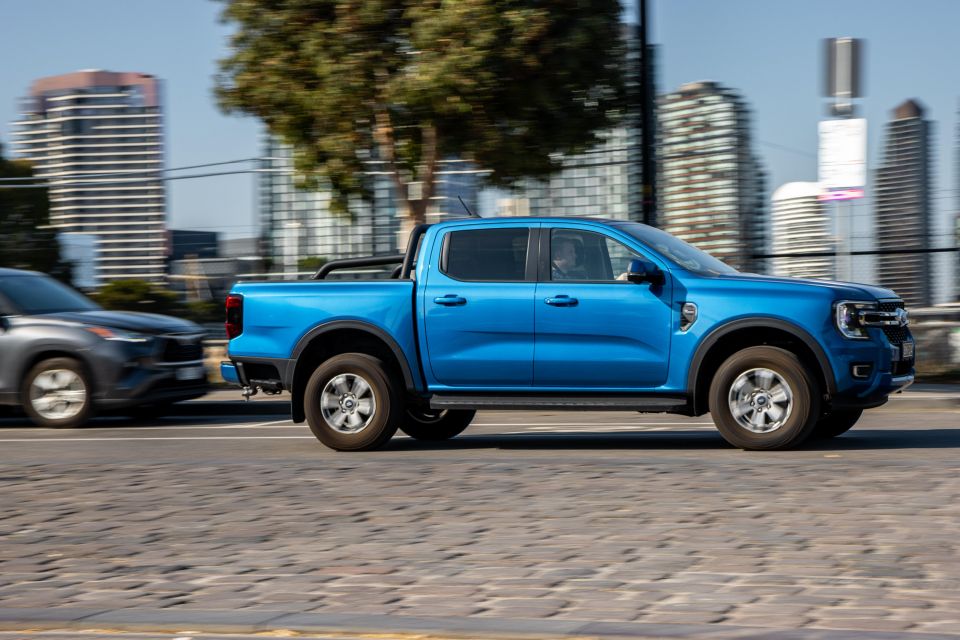
Where expert car reviews meet expert car buying – CarExpert gives you trusted advice, personalised service and real savings on your next new car.
It’s worth noting the reversing camera is a magnet for mud and spray, so it’s worth carrying a cloth in the cabin if you rely on it and frequent mucky roads.
The Isuzu D-Max was the first ute to really put a full suite of driver assists front and centre, but the Ranger’s systems are better calibrated. The lane-keeping assist keeps you between the white lines on the highway and holds the vehicle nicely in its lane in tricky conditions.
Our experience with the Ranger off-road has proven it’s an idiot-proof way to go into the wilderness.
Any inputs to the off-road dials on the transmission tunnel bring clear, bright animations on the instrument cluster or central screen to keep less experienced drivers abreast of what’s happening, and the four-wheel drive system switches modes quickly.

Hill descent control keeps an iron grip on your momentum and doesn’t grind or graunch like older systems, either.
As for towing? The Ranger Wildtrak V6 was effortless with the 2.5-tonne trailer we used in our Mega Test, run in its Tow/Haul driveline mode, which holds lower gears longer.
Despite having 10 speeds, the transmission’s ratios felt well-spaced, and it pulled up the ascent with no hesitation, gaining speed all the way.
The Australian-tuned ride quality over undulations proved to be better than average with only a hint of bounciness, ditto the engine braking from the diesel – although the buttons on the gear shifter for manual changes are annoying. Paddles would be a better option.
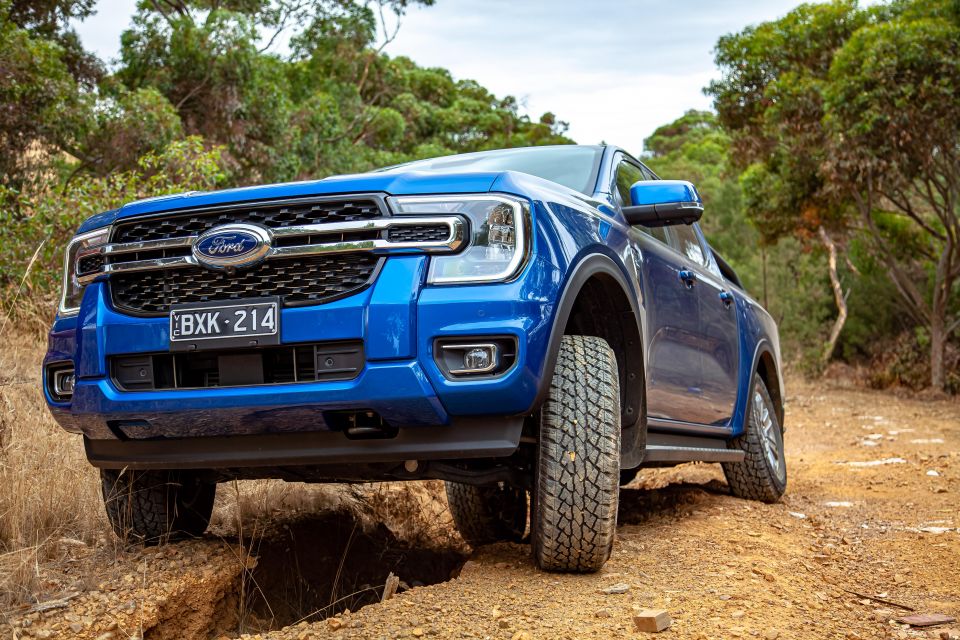
| Off-road dimensions | Ford Ranger XLT V6 |
|---|---|
| Track front and rear | 1620mm |
| Ground clearance | 234mm |
| Approach angle | 30.0 degrees |
| Departure angle | 23.0 degrees |
| Ramp breakover angle | 20.0 degrees |
| Wading depth | 800mm |
To see how the Ford Ranger compares to its rivals, check out our comparison tool
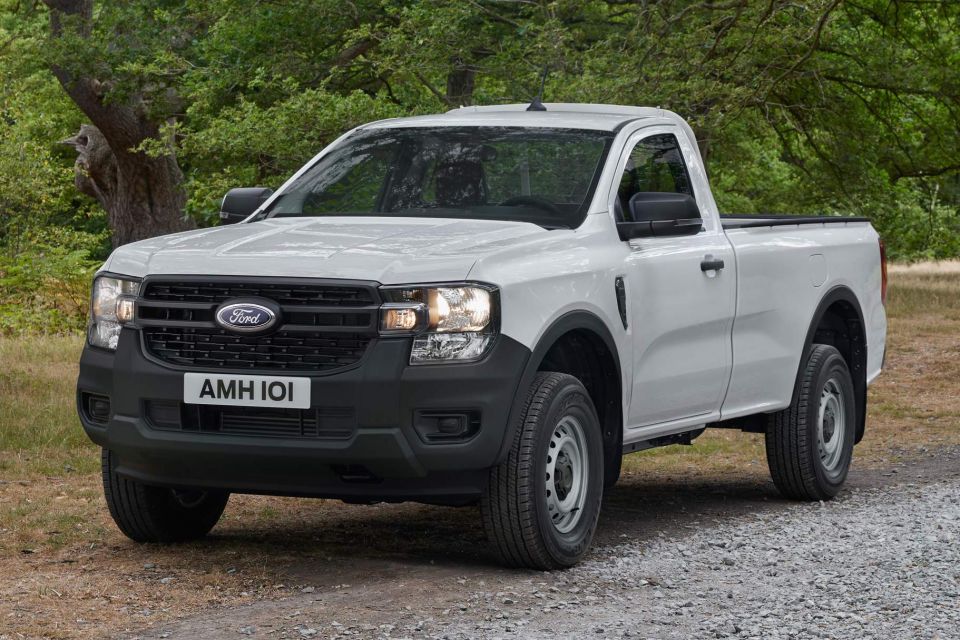
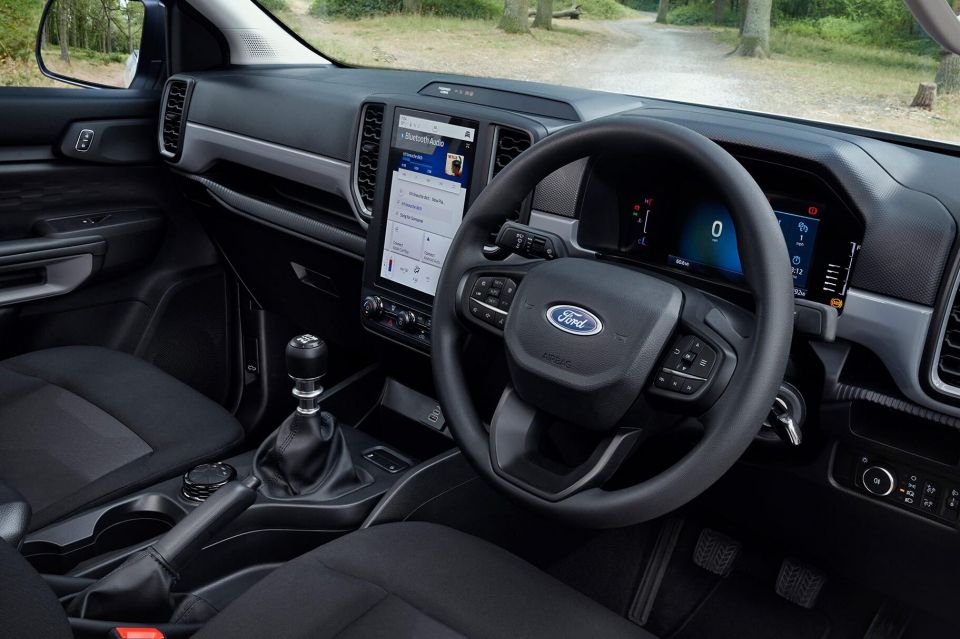
Ranger XL standard equipment:
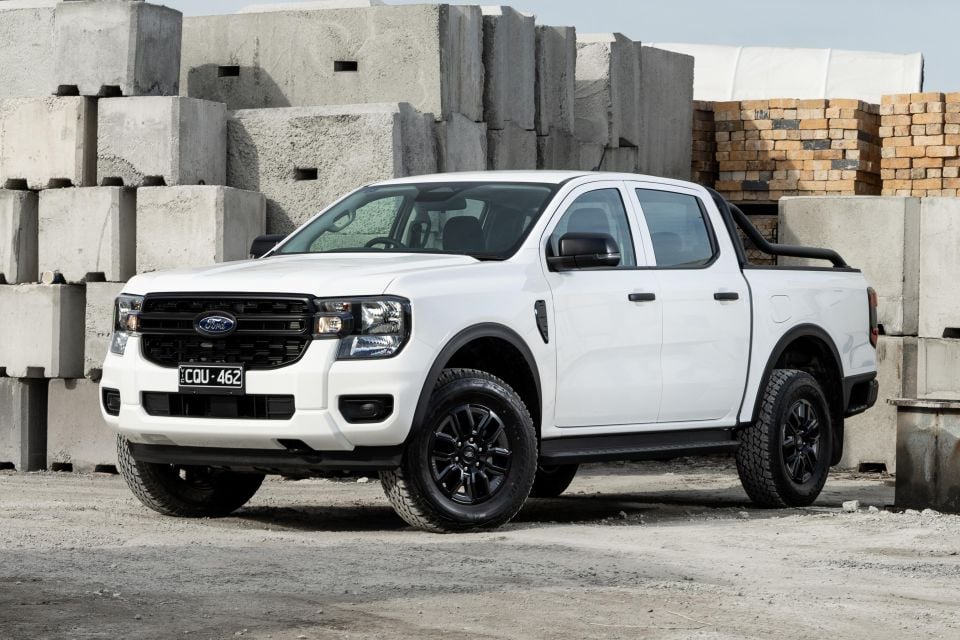
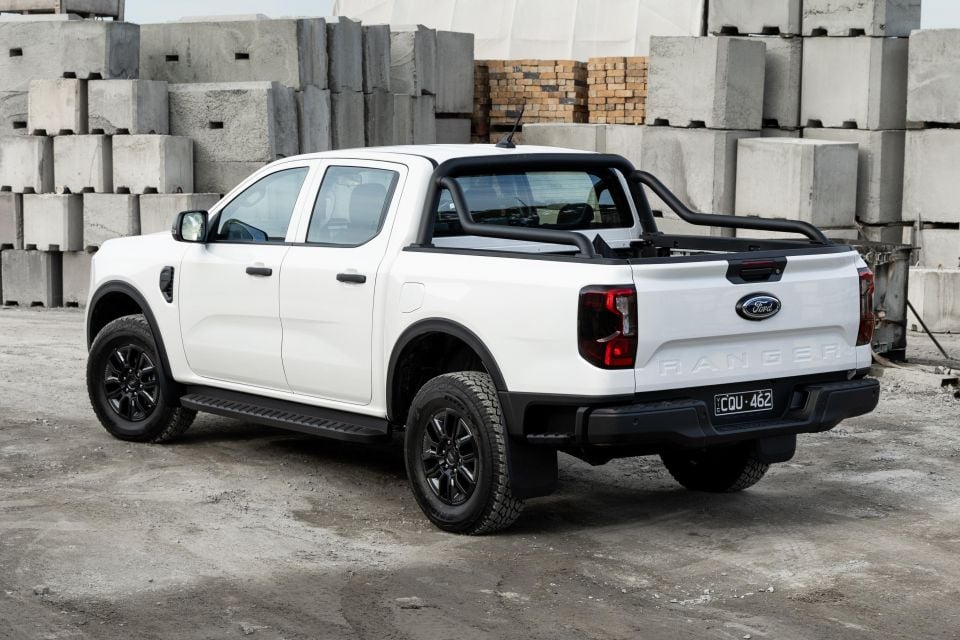
Black Edition adds:
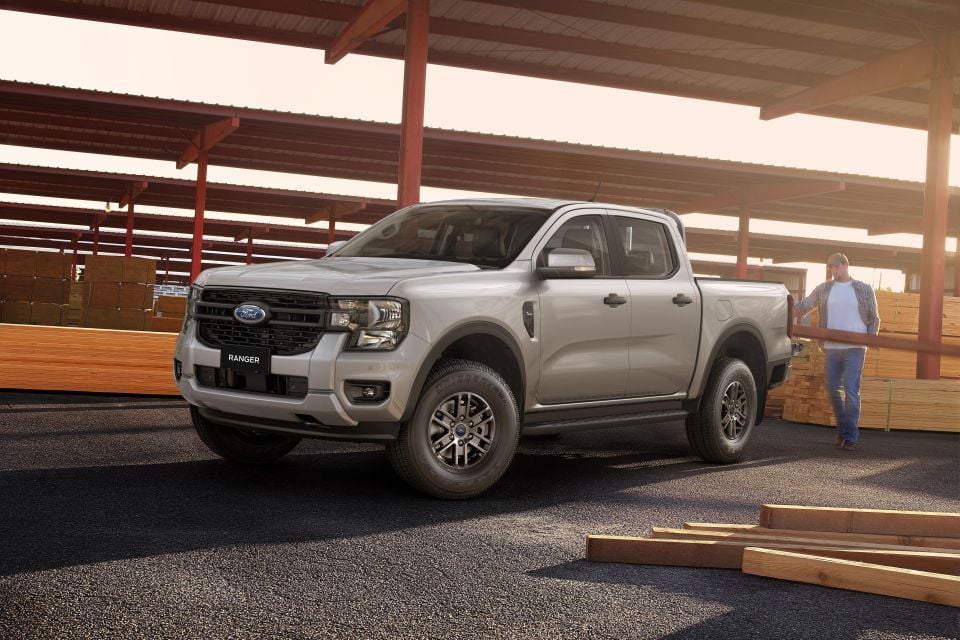
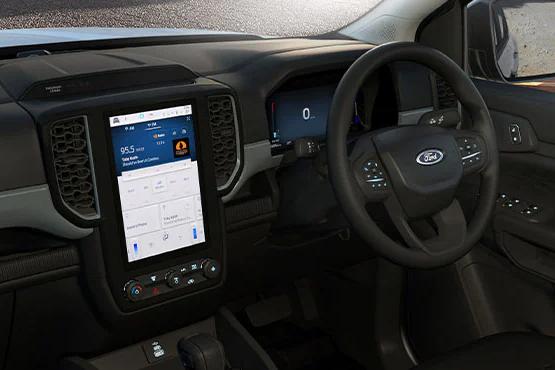
Ranger XLS adds:
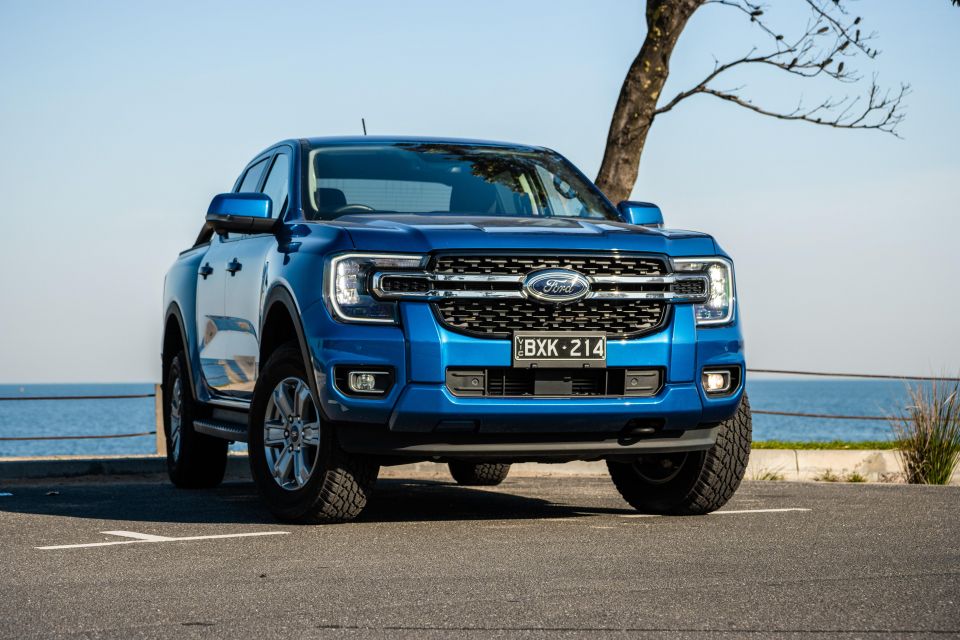
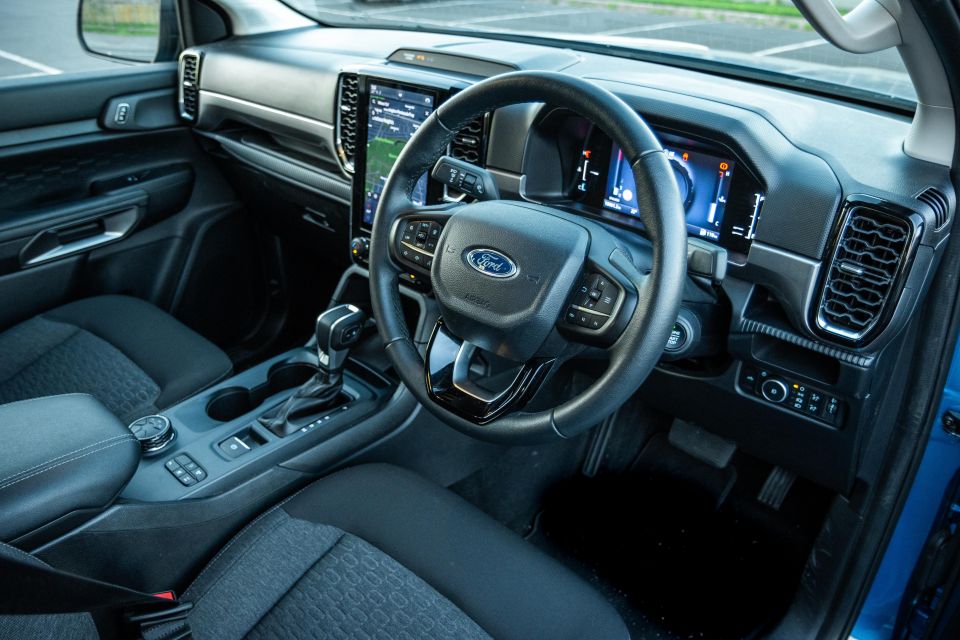
Ranger XLT adds:
All variants of the Ford Ranger apart from the flagship Raptor have a five-star ANCAP safety rating.
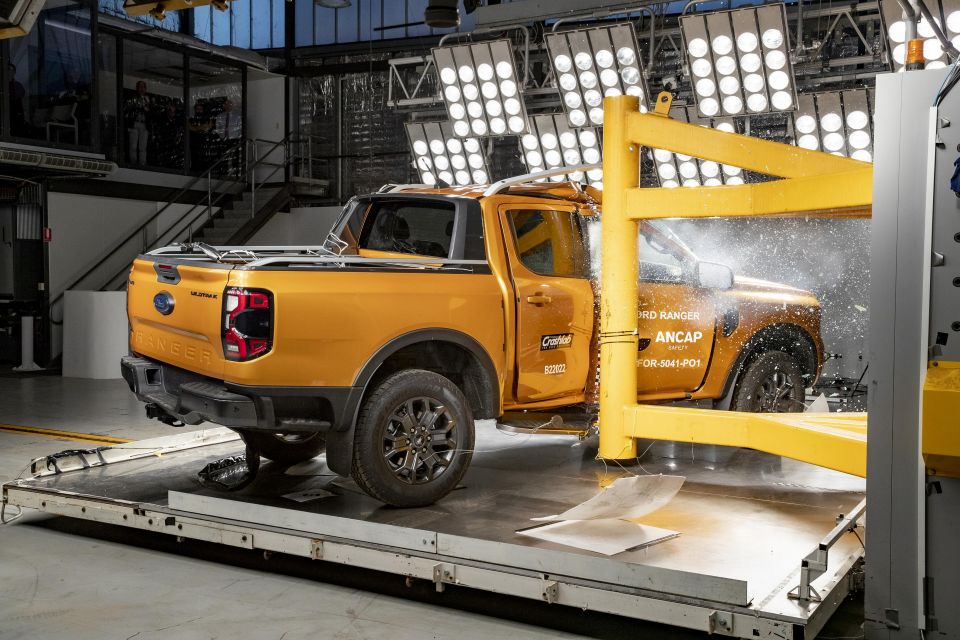
| Category | Ford Ranger |
|---|---|
| Adult occupant protection | 32.24 out of 38 (84 per cent) |
| Child occupant protection | 46 out of 49 (93 per cent) |
| Vulnerable road user protection | 39.96 out of 54 (74 per cent) |
| Safety assist | 13.39 out of 16 (83 per cent) |
Standard safety equipment across the lineup includes:
Ranger XLT adds:
The optional Touring Pack adds a surround-view camera, while stepping up to the Wildtrak and above adds the Active Park Assist 2.0 system.
The 2025 Ford Ranger is covered by a five-year, unlimited-kilometre warranty like the broader Ford range.
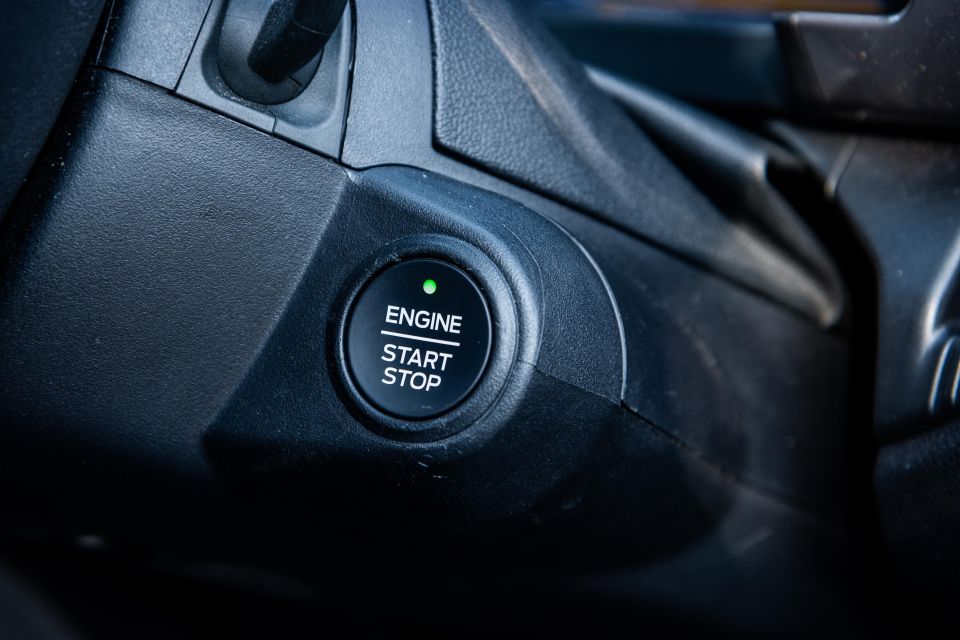
| Running costs | Ford Ranger |
|---|---|
| Warranty | 5 years, unlimited kilometres |
| Roadside assistance | Up to 7 years – service activated |
| Service intervals | 12 months or 15,000 kilometres |
| Capped price servicing | 4 years |
| Total capped price service cost | $1516 |
To see how the Ford Ranger compares to its rivals, check out our comparison tool
Buy your new car without the stress. It's fast, simple and completely free.

Great service from Travis and team, second time I have used this business would not hesitate to recommend them to anyone
Craig C.
Purchased a Ford Ranger in Sunshine Coast, QLD
CarExpert helped Craig save $7,224 on his Ford Ranger, now let us save you on your next new car.
Get your BEST priceYep, the Ranger is still the daddy.
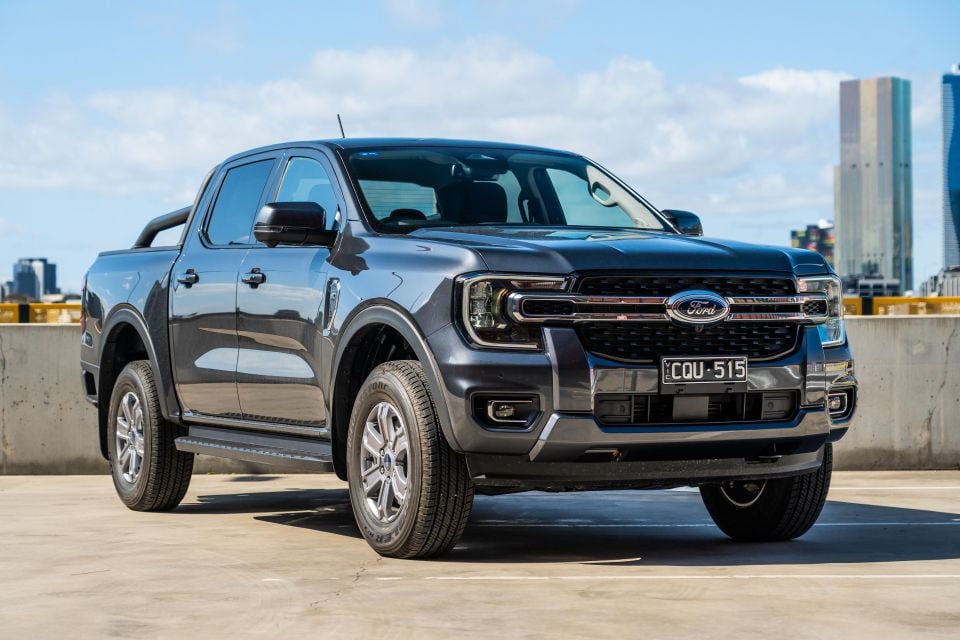
Although its rivals have all moved forward since it launched, the mid-range XLT – which isn’t particularly mid-range in price if we’re being fair – just gets so much right.
It’s nice to drive unladen, tows like a champion, and is capable and approachable off the beaten track. Throw in a modern interior, and Ford is still onto a winner.
Do you need the V6? Our testing has shown it’s worth spending the extra money if you’re planning to push deep into the car’s towing capacity, or the ability to use 4A mode on sealed roads is valuable to you.
As for how the XLT sits in the lineup? It’s all the Ranger you really need, given it packs a full list of active safety features and enough creature comforts inside.
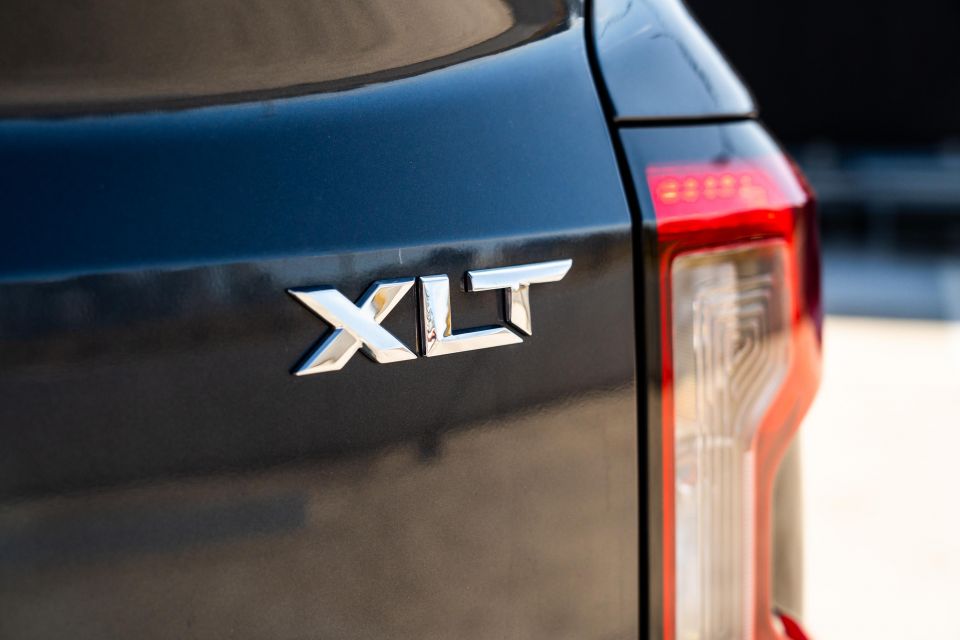
Interested in buying a Ford Ranger? Get in touch with one of CarExpert’s trusted dealers here
Click the images for the full gallery
MORE: Everything Ford Ranger
Where expert car reviews meet expert car buying – CarExpert gives you trusted advice, personalised service and real savings on your next new car.
Scott Collie is an automotive journalist based in Melbourne, Australia. Scott studied journalism at RMIT University and, after a lifelong obsession with everything automotive, started covering the car industry shortly afterwards. He has a passion for travel, and is an avid Melbourne Demons supporter.


Max Davies
23 Days Ago


Josh Nevett
15 Days Ago
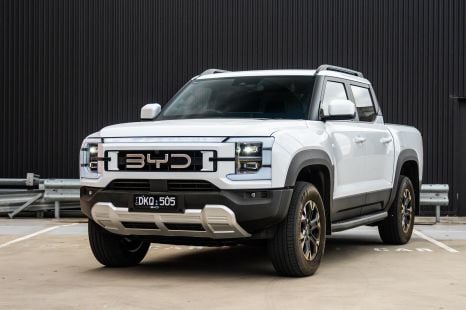

William Stopford
14 Days Ago
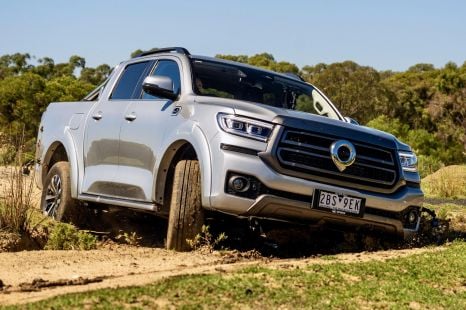

Max Davies
9 Days Ago
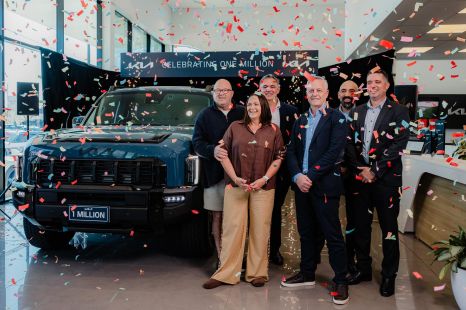

James Wong
8 Days Ago
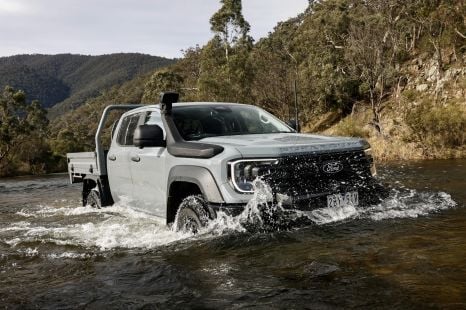

Max Davies
7 Days Ago